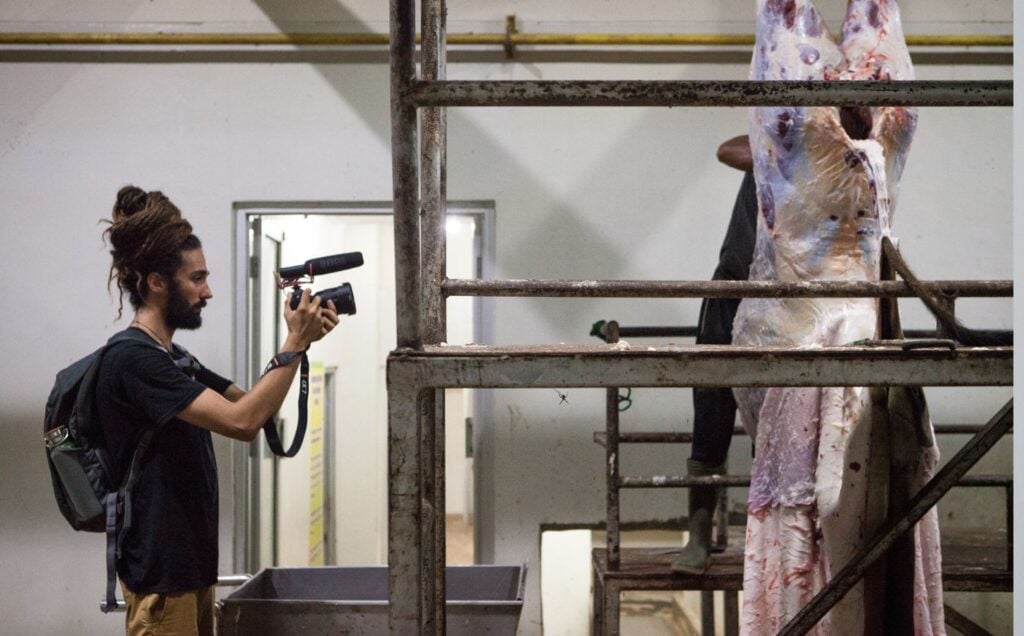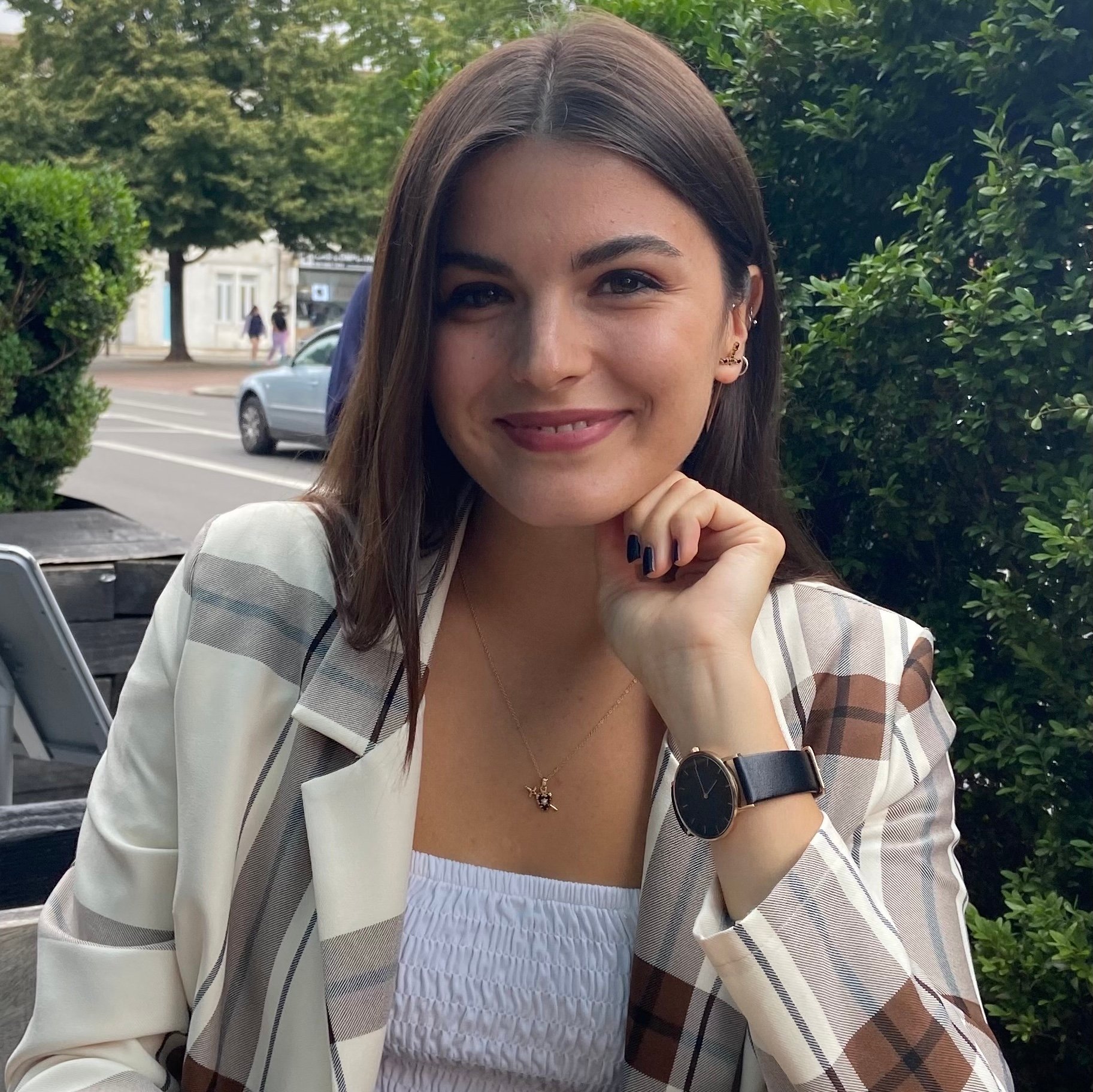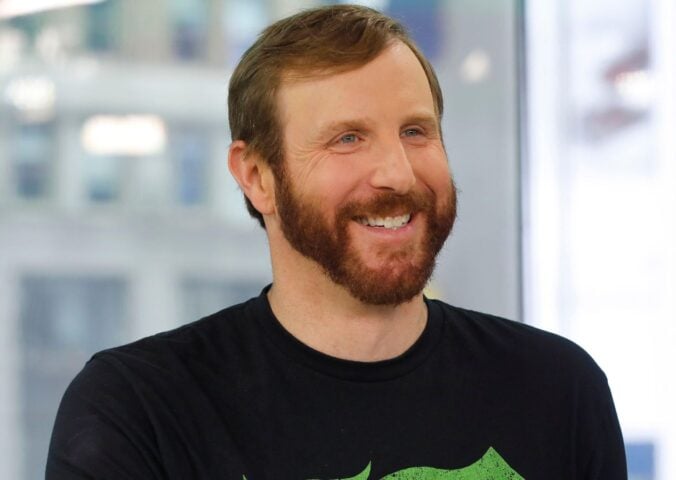While walking around an Indonesian rabbit farm with his camera, Seb Alex noticed a baby rabbit was about to suffocate. They had become squashed between their mother and the side of the tiny cage they were being kept in, and neither had any room to move. Alex has been photographing farmed animals for years and rarely intervenes, but he decided to use his hand to gently push the mother aside to save her baby.
“Hopefully I was able to help,” he says. “Those moments are when you realize that humans do anything to other animals just to make a profit off of them.”
Alex is an animal rights activist and lecturer from Lebanon. He was chosen as a fellow for the animal photojournalism organization We Animals Media last year, and uses the power of photography to shine a light on the many ways humans exploit animals. As part of his role, Alex visited a wide range of farms and slaughterhouses in Indonesia, where he lives.
Photos, he says, play a key role helping people understand the hidden world of animal agriculture. “Someone has to show these. Because the industry relies on the public not paying attention or thinking about the impact of their choices.”
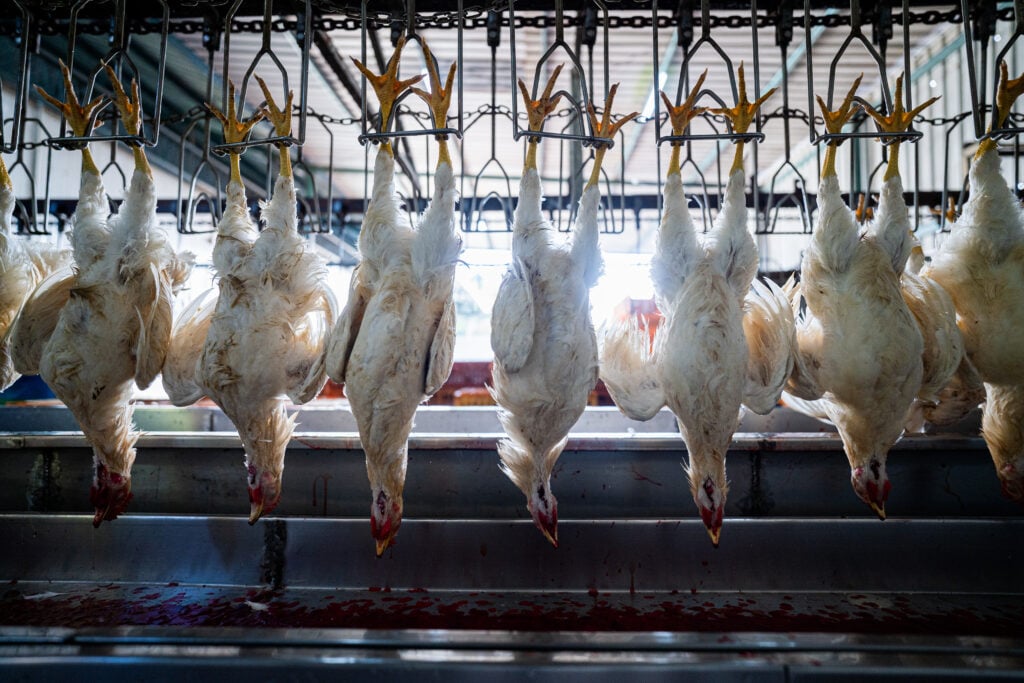
A secret industry
Despite the fact that most people eat animals, the majority have no idea how they’re raised and killed. Being confronted with photographs, Alex says, encourages people to think about the victims. “We are visual beings,” he says. “Photographs help us face the direct impact of our choices.”
As well as visiting pig, cow, and chicken farms, Alex has made sure to photograph those that most of us don’t picture as traditional “farm animals.” These include frogs, fish, shrimp, and ducks.
His visit to a frog farm is an experience that particularly sticks out to him. Frogs aren’t animals we tend to associate with factory farming, but around 180 million are raised and exported from Indonesia each year, often to western Europe. Confined to small barren “ponds” with many other frogs, they are offered no chance to exhibit natural behaviors.
“One thing that really shocked me was how afraid they were of humans,” Alex says. “The second you pass they just all jump in a corner and get on top of each other. And obviously it’s horrible because you have to hide behind the cement and take the camera over the ledge and then take the photos. I flipped the screen so I could see without my face or my body showing so that the frogs don’t get petrified. I didn’t know that frogs would act that way towards a human just passing by.”
The sentience argument
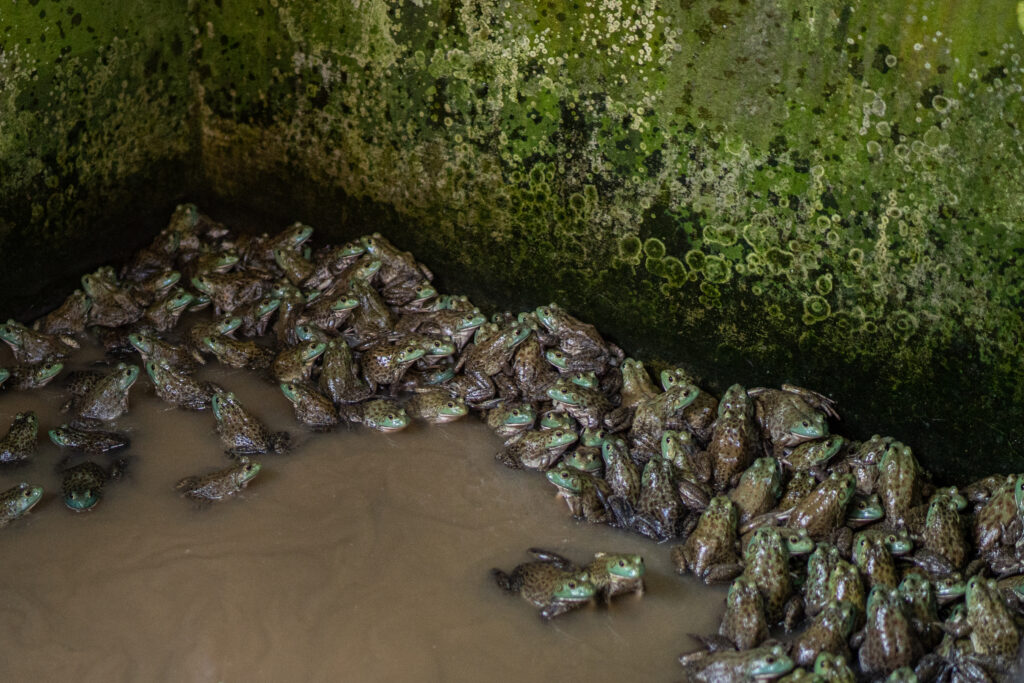
Many of the farms he visited housed animals widely considered to experience fewer emotions than mammals like dogs or pigs. The way we should treat animals is often judged on how “sentient” humans deem them to be. But this, Alex says, is the wrong way of looking at it.
“People talk about sentience hierarchy. But if a human was born with a specific disability that made them less sentient than other humans – or even another animal – does that now give us the right to violate the basic moral rights of this human? Of course not, we would never accept that. So why would we accept it in the case of other animals? A shrimp might be less sentient than a dog, but they are still both animals who want to live.”
Animal abuse is everywhere
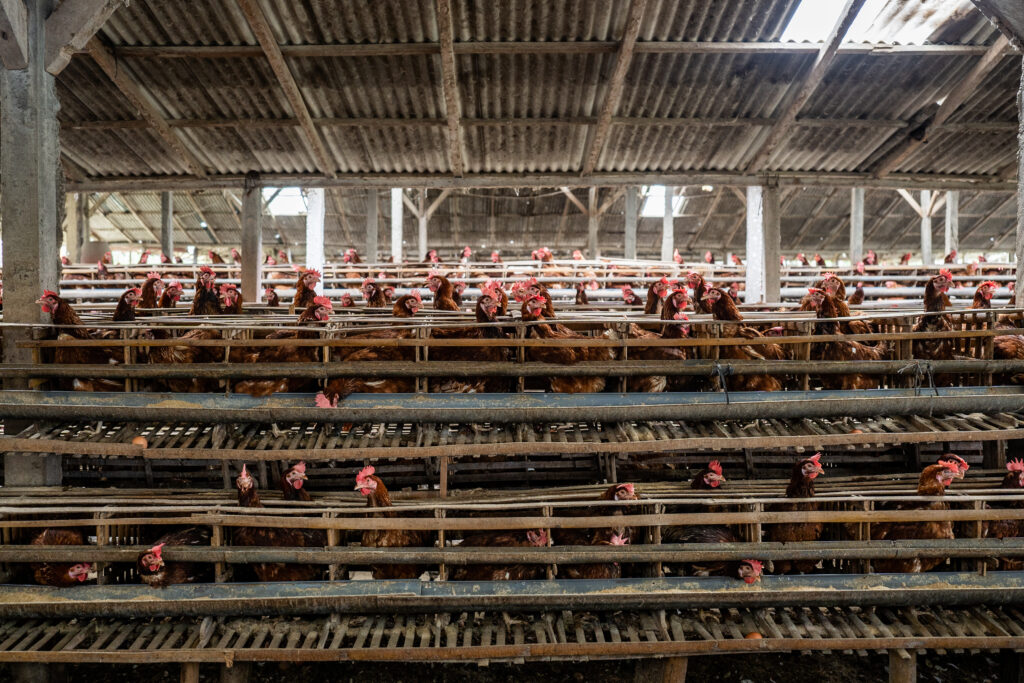
The animal farms Alex visited are terrible, but they are not uniquely so. A misconception that many people living in the west have is that such farms are confined to other countries, and not present within their own. There is a tendency for places like the UK, for example, to insist they have excellent animal welfare. But this is a lie, Alex warns.
“If I ever share anything online, I say don’t use this opportunity to raise any type of racist comments about what’s going on here just because it’s here,” he explains. “Because this is happening wherever you are in the world.”
The main difference between photographing in the west and Indonesia, Alex says, is that countries like the UK and US hide what they do from the public. This keeps up the “high welfare” facade that so many of us believe in. The vast majority of animals in these countries are raised in unmarked factory farms hidden from view. There, they are subjected to cages, mutilations, and painful deaths.
“I have tried in so many countries in Europe and in and other parts of the world to just simply ask: ‘hey, can I come in and take photos inside the farm inside a slaughterhouse?’. It’s always a no, straight up no.”
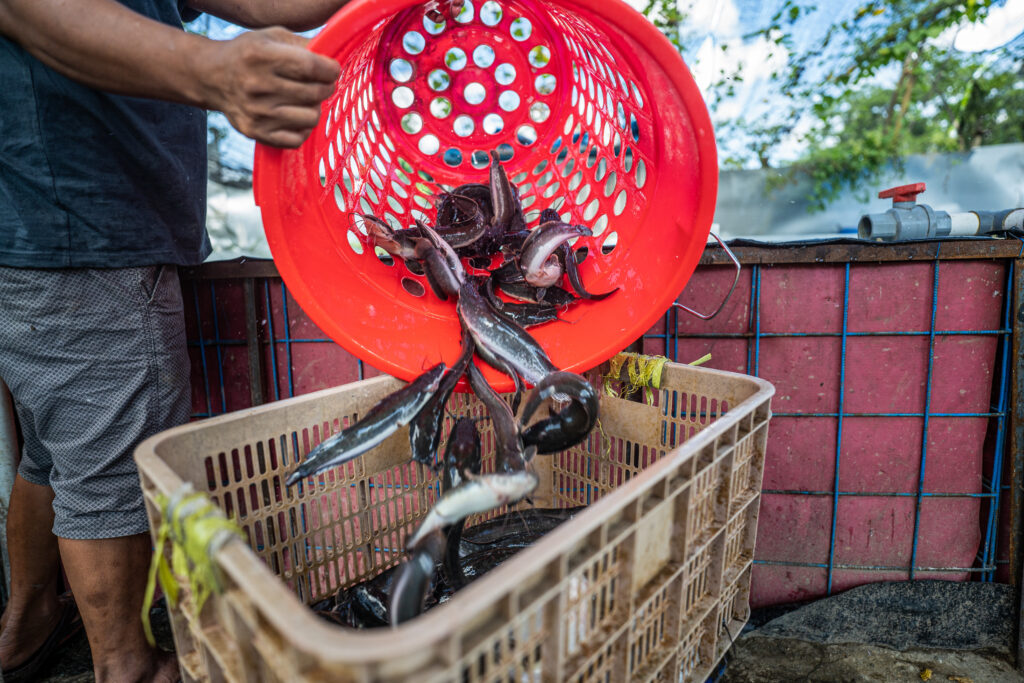
Alex says he never encountered any issues when entering Indonesian farms, and that workers were happy to let him in. He just explains who he is, and that he was photographing animals for a project. “And it makes sense, at least there’s logical consistency, right? Like if you’re going to do this, then why do you want to hide it?”
Harrowing work
Photographing these animals is important work, but it understandably takes a huge mental toll.
One particularly difficult moment for Alex was leaving a chicken factory farm following an accident. After slipping on the floor, his leg fell through a meter of chicken waste, covering his shoes and trousers in excrement. The farmer helped him get clean and he left the farm, but it hit home that the chickens were trapped there in those conditions.
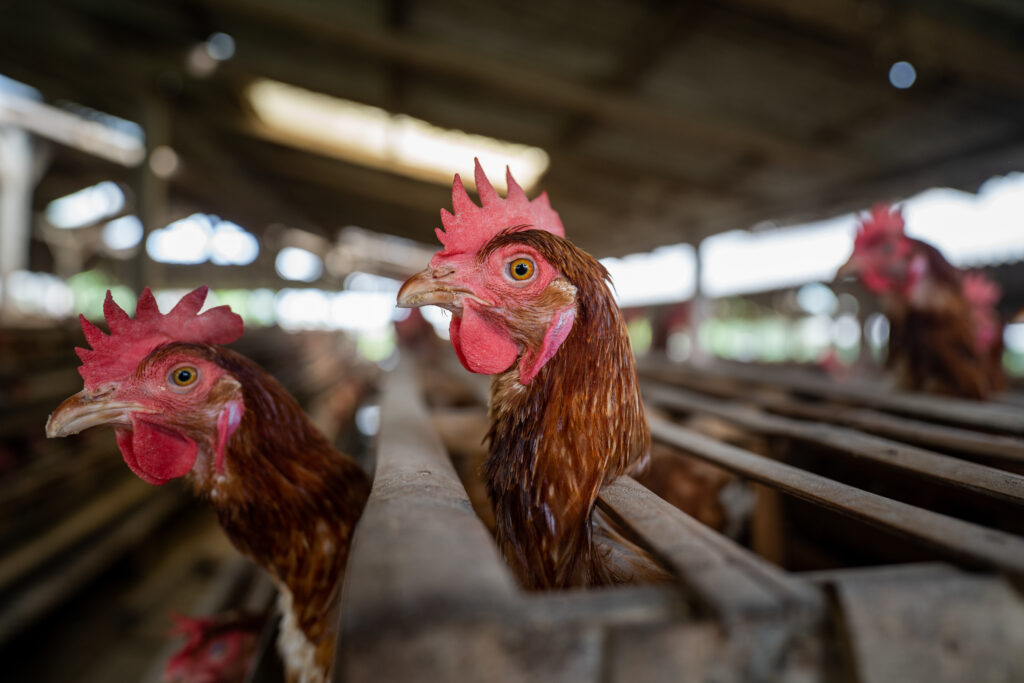
“I thought how intense it must be for these animals to live above their waste. For months like that in a small cage. It’s horrible. And I was thinking about that during the whole ride home. I’m lucky that I could clean myself and go home, and get rid of my shoes and everything and I’m fine. But these animals will stay there, and that’s really disturbing.”
He manages to cope with his work by temporarily shutting off his emotions while at farms. “I’m just there to do my job and leave,” he says. “I’m not there to have emotions. I deal with my emotions later. It actually usually hits me when I’m editing the photos because then I remember the individuals.”
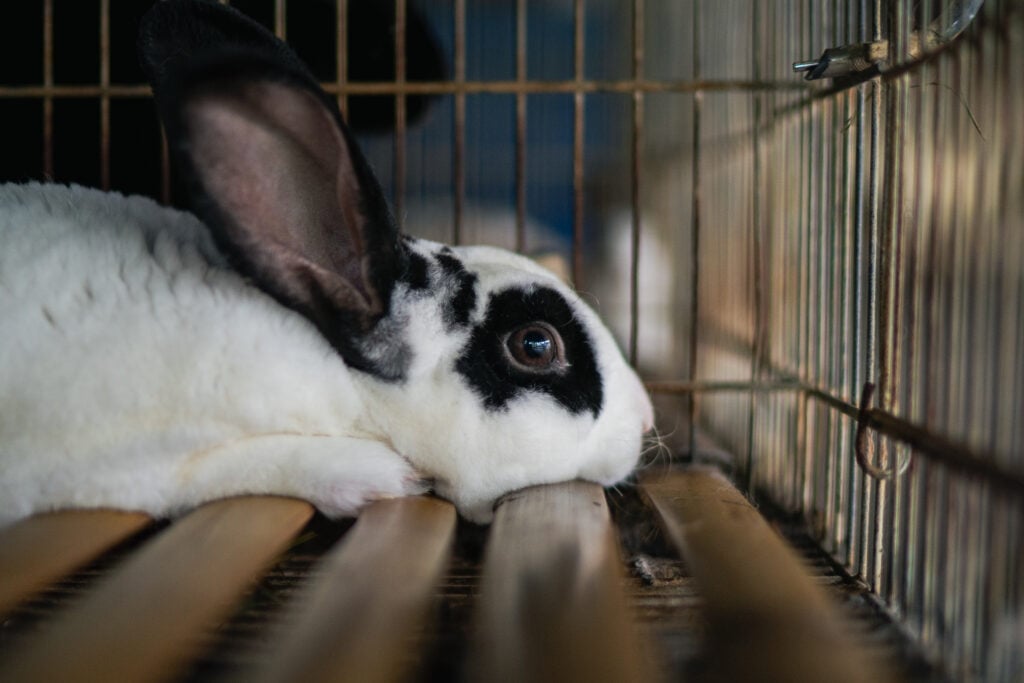
A rescue
While it’s important for Alex to remain objective, there have been moments when he’s managed to provide some help and comfort to animals. As well as the rabbits mentioned previously, he once convinced a farmer to allow him to take a chicken destined for slaughter home with him.
“I explained to him that I really like animals, and asked is there any way you have a chicken that might be sick that you would want to get rid of? That I can take home with me?
“And then after some time he was like ‘you know what? yeah sure,’ and then he gave me a chicken who lived with us for a few months. That was the only time I was able to do something. But usually I’m just there to take the photos, to ask questions, and communicate with the farmer. See if they have any information about other farms, and then leave.”
The future of Seb Alex’s photography
The vast majority of Alex’s work has focused on hidden animals in terrible situations. But he’s now planning to go to Namibia in southern Africa to document some of the remaining few who live their lives free from human interference.
“I’m thinking for the first time maybe I’ll be able to take photos of wild animals, in the wild, just being themselves, and not see them suffer in any way.”
